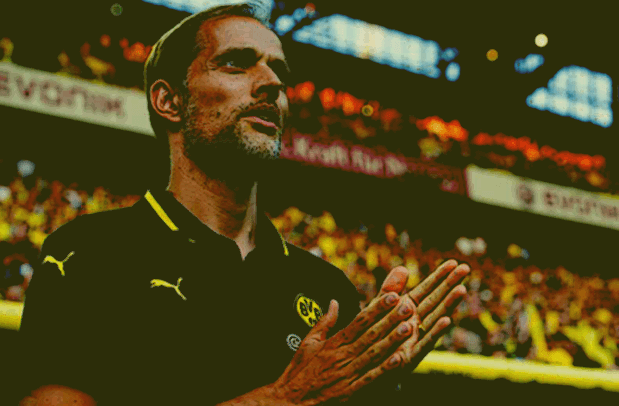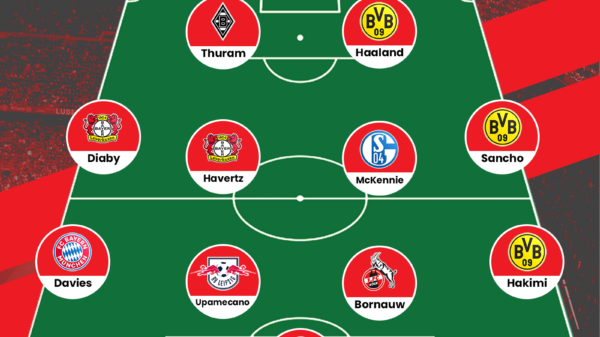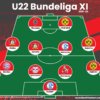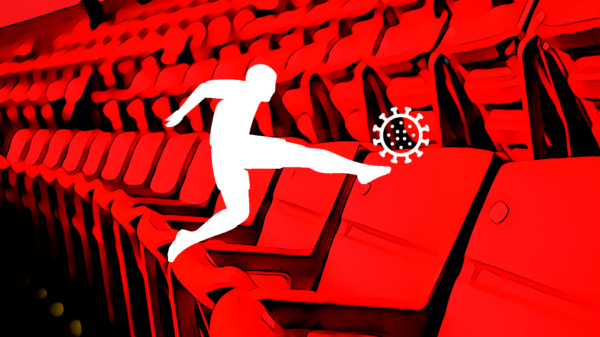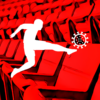Football analysts will tell you that there are no such things as coincidences on a football pitch. While this may be overestimating the beautiful game, there is undoubtedly an argument to be made that even minor changes can have a telling effect in modern football. Hamoudi Fayad puts forth this argument using the game between Borussia Dortmund and Borussia Monchengladbach as reference.
Small aspects. We all favour the glitz and glamour, aesthetic play and a series of crazy situations that will help our team win the game. Yet as the modern day moves forward in terms of technology, snapping the most valuable parts of a game to show the world in a few seconds on repeat is exceptionally easy, especially if you use the video analysis platform at QwikCut. However, the true footballing worth comes in the depth of 90 minutes.
I refuse to believe that a wonder goal separates two teams. The mechanism towards creating that goal was extremely complex. Every goal is in its context, no matter how many deflections it took to arrive at the final destination. They are all formed through the basis, and the basis is a minor step towards achieving success.
What does this have to do with my final point? I bring forth one of the most anticipated games by tactical and statistical analysts across the world. Not the one that would bring in the most viewers in Manchester City vs. Chelsea, however a game that is more worthy of watching – filled with intelligence, mental battles and intricate pathways to success.
It’s no longer a basic concept of the right midfielder failing to track back, it stems much more into the deep connections formed within the minds of football players. Connections so strong, that these players could play alongside their teammate with a blindfold placed across their eyes. Synergies, a vital word that defines this concept.
So there it was, the ultimate match up between two of the smartest men in world football in 2015. Thomas Tuchel, the promising manager faces off against the unheralded tactician in Lucien Favre. Both had immense pressure on them.
On one hand, Tuchel was in front of 81,000 loyal fans – a loss would certainly do him no good in making himself loved at the Signal Iduna Park. Meanwhile Favre was tasked to consolidate Borussia Monchengladbach as a Champions League contender, where losing to a team who are no doubt still amongst the elite – but in a rebuilding phase – would cast a worrying image in the minds of The Foals’ fan base.
Central access
An integral part of the pitch. Control stems from the centre, however the meaning of control seems to differ between many. ‘Control’ doesn’t necessarily relate to keeping the ball. It is interconnected through 4 main aspects: the opponents, the ball, the teammate and the space. There is little advantage in keeping hold of the ball with a lack of movement, poor connection and no support.
A Salida La Volpiana is where the defensive midfielder (#5) drops into the space between the central defenders who shift wide while the full backs push up towards the midfield line, or possibly a higher level to penetrate the opposition defence.
The connections that can be created are visible, although only with movement. A team that is stale in creating these synergies will suffer in producing goalscoring chances. One of the mechanisms to forming these situations are as above, where both half spaces see a 1v2 underload for the blue team. Movement, qualitative superiority and teamwork are three of many traits needed to thwart the opponent’s citadel.
Now this is where the beauty of football comes in; as after the continuous use and progression of build-up play and how it is interconnected to fluidly shift into different phases during a matter of seconds, in modern football we look at how small aspects can make an effective difference in forms of attacking play. Thomas Tuchel, a man renowned for his comprehensive study of football used it to overcome the power of the Monchengladbach deep block.
Dortmund‘s build-up play saw alterations that led to a first half double, before later adding on the third goal just before the break:
Gladbach’s position-oriented zonal marking leads to open spaces on either side of the field. It possibly had to do with early season changes where as many as 4 new players – Drmic (left striker), Stindl (right central midfielder), Christensen and Schulz (centre backs) – were in preparation towards adapting to a very well-oiled system under Favre.
 Here we can see how the switch of play shifts the whole Gladbach team, who is fluidly moving to protect the space should the ball be moved into the edge of the half space (highlighted above) in quick fashion. This is one of the mechanisms of position-oriented zonal marking, where the only space that should be available to Dortmund is the flanks. Not quite…
Here we can see how the switch of play shifts the whole Gladbach team, who is fluidly moving to protect the space should the ball be moved into the edge of the half space (highlighted above) in quick fashion. This is one of the mechanisms of position-oriented zonal marking, where the only space that should be available to Dortmund is the flanks. Not quite…
As Gladbach are shifting to the right, Hummels’ intuition as a ball playing centre back is visible in where he creates the first goal of the game. Two wide outlets in Piszczek and Schmelzer to ensure the stretching of play – which if you notice, Gladbach only start to move towards the latter after it seemed like Dortmund would play the dreadful U pass (A pass that goes from flank to flank through the central midfielders from the full backs, slowly and laterally with no penetration) – before Hummels notices a hole in the Gladbach midfield.
*Notice, Gladbach’s strikers are too far away from the midfielders thus creating a larger than normal area for Kagawa to operate in, while Dortmund used the split second with great accuracy due to Hummels’ ability.
A laser pass into Kagawa, before a quick fire move that results into Reus smashing the ball past Yann Sommer to announce Dortmund’s first goal of the season. Small changes in the build-up produced this goal.
If you notice, Julian Weigl positioned himself in an unorthodox way to free up Hummels to playmake from deep. Last season against Schalke in the Ruhr Derby, with Hummels so deep and limited to direct passes, he played a brilliant ball over the top to Aubameyang only for him to spurn another chance. Now under Tuchel, he had more freedom to move and with such a small change in the movement of the defensive midfielder alongside him – in this situation, Weigl who dropped left or right of Hummels to allow him to drive forward whilst Weigl drags or occupies an opposition player.
A difference in a couple of yards; a difference that yielded two goals.
Second goal
The same process of building up play from deep however a different form of scoring the goal itself. Hummels once again – the catalyst of play from just after the halfway line – uses the flanks and tricks the position-oriented Gladbach once again, who were understandably more centrally compact due to the first goal mishap. Unfortunately, Schmelzer plays in a beautiful cross the eclipses Gladbach’s passive right back and right midfielder, alongside brilliant movement by Aubameyang to get the better of the inexperienced centre backs and nod in a header.
Decisions, Decisions, Decisions
A pass into one zone over another is never a huge decision, it happens continuously for 90 minutes. Yet the way Tuchel used it to maximise attacking potential with his team was visible early on, and created a very dangerous Dortmund that thrashed a usually organised Gladbach.
Connections. Here, Weigl slowly drops behind Hummels, dragging the #9 beside him. Hummels easily beats Traore, thus finding himself in space. This has nothing to do with the second goal, but it shows you how these minor decisions can create a plethora of options that are repeated fluidly throughout the game.
Future Reference
A learning curve that I took myself on after my first ever game analysis. Despite it’s poor quality, I would like to show how my inability to see the smaller tactical aspects got a poor review from various websites back in early 2014. It’s not about if the team plays a long ball to the strikers, or if the team crosses a lot:
“An even affair in the first 15 mins where both teams resorted to a more Route One style of play. Higuain and Hamsik were doing their best to help out in defence while at the same time linking play but Callejon and Insigne weren‘t in the game too much to help out from the wings. Maggio and Britos weren‘t involved too much either as the wingers didn‘t use them for help while they overlapped. The game started to move into Athletic‘s favour for the last 30 minutes of the first half but Napoli retained the ball more than them. Athletic asserted their dominance on the wings and in chances created, with their full backs, especially De Marcos, making blazing runs down the wings… with Maggio being caught out too high, this helped them too – benefitting the electric left winger, Iker Muniain, the most.“
My first tactical analysis, where I looked at the 1-1 draw between Athletic Bilbao and Napoli. The difference between my analyses have come in noticing the small things, looking over them again and imagining how they could be improved or defended. To look at a myriad of ways of the situation forming and how it can fall out is very helpful towards building your insight towards the game.
Written by Hamoudi Fayad
- Hipster Guide 2016-17: Bayer Leverkusen’s tactics, key players and emerging talents - August 25, 2016
- Talent Radar: Saudi Pro League 10 Young Players (U-23) to Watch in 2016-17 - August 23, 2016
- Dry Grassroots: Youth Football Deficiencies in Western Asia - July 19, 2016




















































